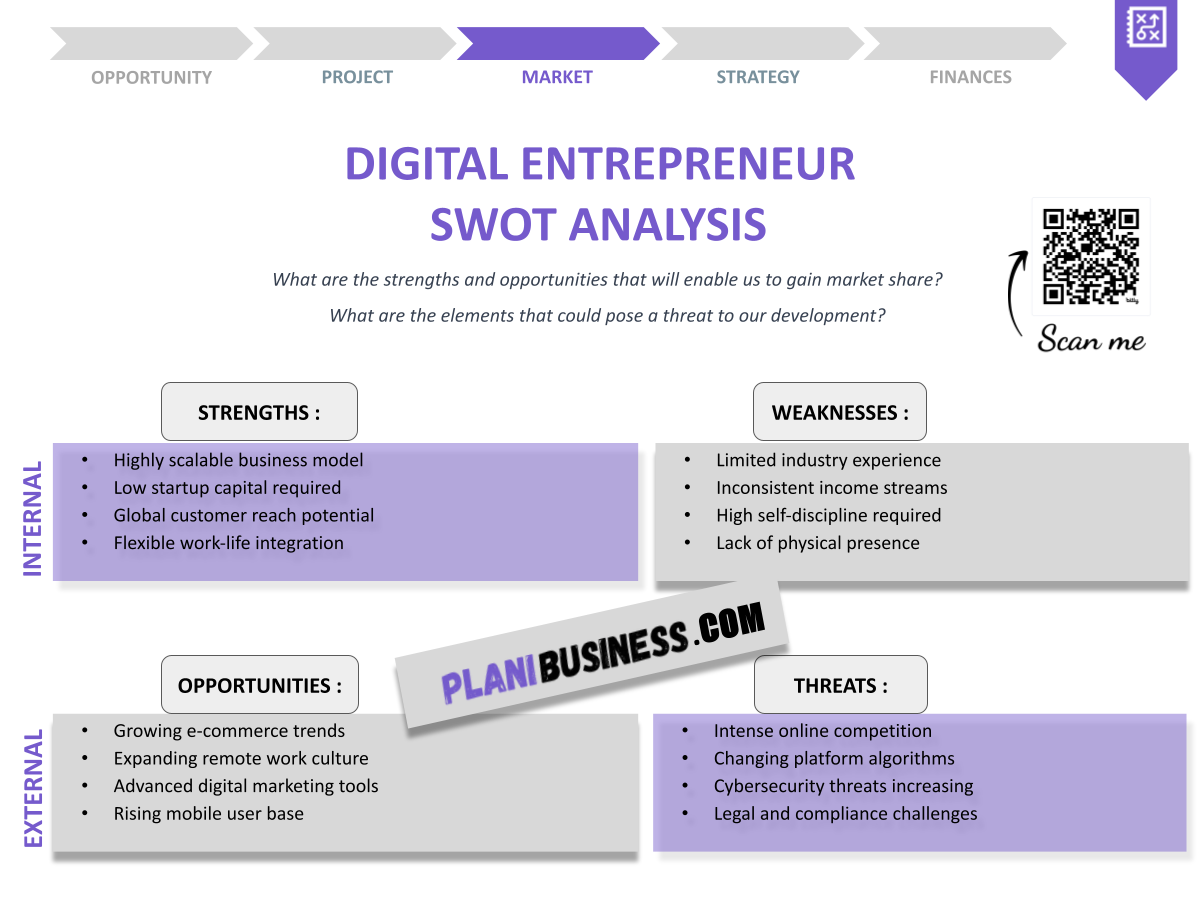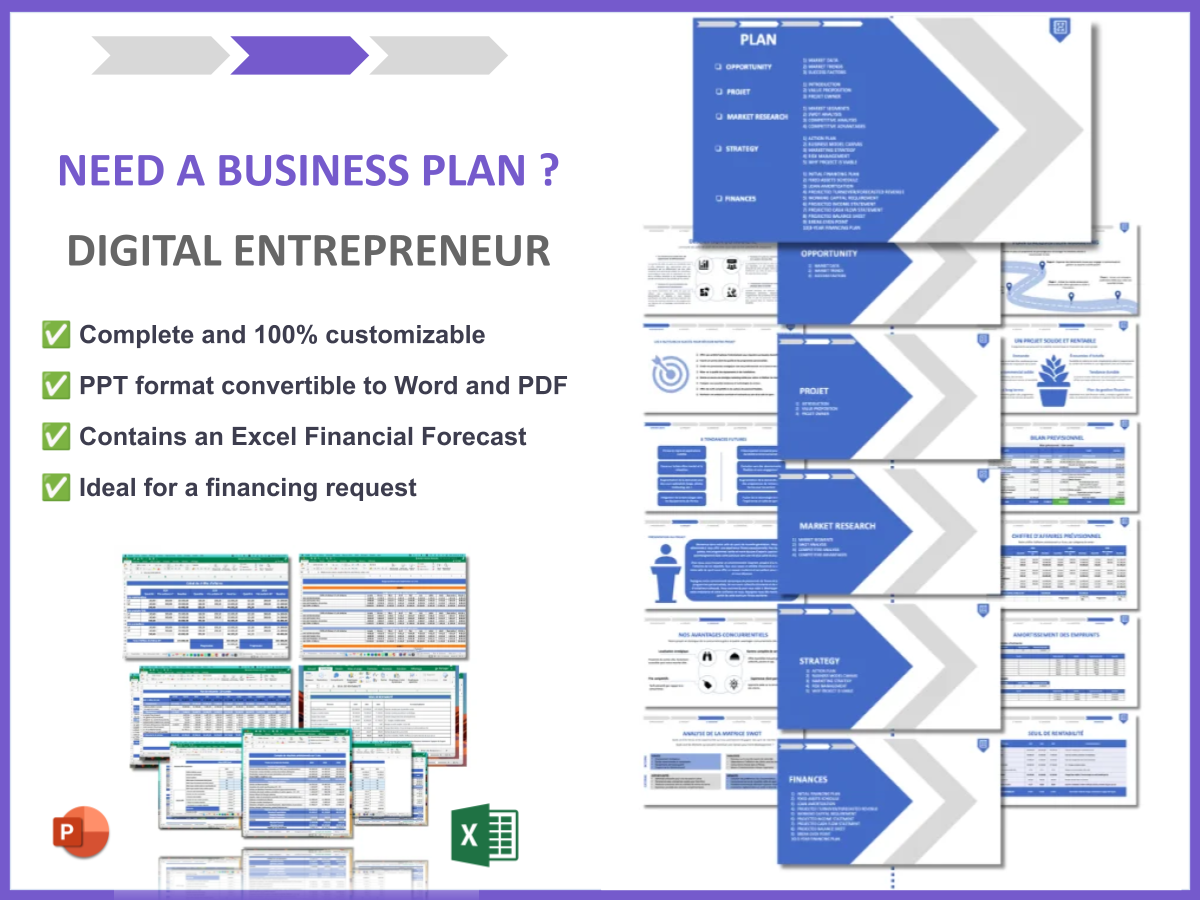Why Should You Have a SWOT Analysis for Your Digital Business?
Are you thinking about starting a digital business? You’re not alone! In today’s fast-paced online world, a staggering 90% of startups fail within the first five years. But fear not! A solid SWOT analysis can help you navigate the challenges ahead. A SWOT analysis stands for Strengths, Weaknesses, Opportunities, and Threats. It’s a strategic planning tool that helps you identify your business’s internal and external factors.
Understanding the importance of a SWOT analysis is crucial for any aspiring digital entrepreneur. It not only highlights your unique advantages but also sheds light on areas that may need improvement. By recognizing market opportunities and potential threats, you can formulate strategies that are well-informed and proactive.
- Understand your competitive advantage
- Identify areas for improvement
- Recognize market opportunities
- Anticipate potential threats
- Make informed decisions
- Enhance strategic planning
- Improve resource allocation
- Boost team collaboration
- Increase business resilience
- Drive growth and innovation
How Do You Write a SWOT Analysis for Your Digital Business?
Crafting a SWOT analysis involves introspection and market research. Let’s break it down into four essential components:
Strengths
Identify what sets your digital business apart. This could include unique skills, innovative technology, or a strong online presence. Consider your resources—what do you have that others might lack? Evaluate your team’s strengths and how they contribute to your business success. Use data analytics to substantiate your strengths.
Weaknesses
Acknowledge areas where your business may fall short. This could be anything from limited resources to lack of brand awareness. Seek feedback from customers and team members to identify blind spots. Analyze your competition to understand how you compare. Develop a plan to address these weaknesses.
Opportunities
Look for emerging trends that align with your business goals. Consider partnerships that could enhance your offerings. Assess market gaps that your business can fill. Leverage technology advancements to gain a competitive edge.
Threats
Identify external challenges such as economic downturns or shifts in consumer behavior. Keep an eye on competitors who may pose a threat. Evaluate regulatory changes that could impact your business. Develop contingency plans to mitigate these threats.
SWOT Example N°1 for Digital Marketing Agency
Here’s a practical example of a SWOT analysis for a fictitious digital marketing agency.
| SWOT | Analysis |
|---|---|
| Strengths | Experienced team, strong client base |
| Weaknesses | Limited social media presence |
| Opportunities | Growing demand for digital services |
| Threats | High competition in the market |
- Experienced team
- Strong client relationships
- Growing industry demand
- Competitive landscape
Using this example, you can see how the agency's strengths can be leveraged to capitalize on market opportunities while addressing weaknesses and threats. This insight can guide strategic decisions.
SWOT Example N°2 for E-commerce Startup
Here’s another example focusing on an e-commerce startup.
| SWOT | Analysis |
|---|---|
| Strengths | Niche product offerings |
| Weaknesses | Limited brand recognition |
| Opportunities | Expansion into new markets |
| Threats | Supply chain disruptions |
- Unique product line
- Untapped markets
- Potential for brand growth
- Vulnerability to supply issues
This example illustrates how the startup can leverage its unique offerings while working to build brand recognition in a competitive landscape.
SWOT Example N°3 for SaaS Company
Let’s examine a software as a service (SaaS) company.
| SWOT | Analysis |
|---|---|
| Strengths | Scalable business model |
| Weaknesses | High customer churn rate |
| Opportunities | Increasing demand for SaaS solutions |
| Threats | Rapid technological changes |
- Scalable solutions
- Market growth potential
- Churn management challenges
- Tech adaptation requirements
This analysis shows the SaaS company's potential for growth, balanced with the need to address customer retention challenges and stay ahead of technological advancements.
SWOT Example N°4 for Content Creation Agency
Here’s a look at a content creation agency.
| SWOT | Analysis |
|---|---|
| Strengths | Creative talent |
| Weaknesses | Inconsistent quality |
| Opportunities | Rising demand for content |
| Threats | Content saturation |
- Talented team
- Demand for quality content
- Quality control issues
- Competition in content space
In this case, the agency can capitalize on the increasing demand for content while ensuring quality standards are consistently met to stand out in a saturated market.
SWOT Example N°5 for Mobile App Development Company
Let’s analyze a mobile app development company.
| SWOT | Analysis |
|---|---|
| Strengths | Innovative app features |
| Weaknesses | Limited marketing budget |
| Opportunities | Growing mobile usage |
| Threats | Intense competition |
- Innovative features
- Budget constraints
- Mobile growth potential
- Competitive pressure
This example highlights the company's innovative edge but underscores the need for effective marketing strategies to reach a wider audience in a competitive landscape.
SWOT Example N°6 for Subscription Box Service
Here’s a look at a subscription box service.
| SWOT | Analysis |
|---|---|
| Strengths | Unique product curation |
| Weaknesses | Customer acquisition costs |
| Opportunities | Market expansion |
| Threats | Economic fluctuations |
- Unique offerings
- High acquisition costs
- Market growth potential
- Economic vulnerability
This analysis shows how the subscription service can benefit from its unique offerings while being mindful of customer acquisition costs and economic changes that may impact growth.
SWOT Example N°7 for Virtual Coaching Business
Let’s analyze a virtual coaching business.
| SWOT | Analysis |
|---|---|
| Strengths | Personalized coaching |
| Weaknesses | Limited client base |
| Opportunities | Growth of online coaching |
| Threats | Competition from established brands |
- Personalized service
- Small client base
- Online coaching growth
- Competitive market
This SWOT analysis reflects the personalized nature of the business while acknowledging the competitive landscape that requires strategic marketing and client retention efforts.
SWOT Example N°8 for Digital Consulting Firm
Here’s a look at a digital consulting firm.
| SWOT | Analysis |
|---|---|
| Strengths | Experienced consultants |
| Weaknesses | Limited service offerings |
| Opportunities | High demand for consulting |
| Threats | Economic downturns |
- Skilled team
- Service limitations
- Demand for consulting
- Economic risks
This example highlights how the firm can leverage its experienced consultants while exploring new service offerings to meet the growing demand in the consulting market.
SWOT Example N°9 for Online Education Platform
Here’s a look at an online education platform.
| SWOT | Analysis |
|---|---|
| Strengths | Comprehensive course offerings |
| Weaknesses | High course dropout rates |
| Opportunities | Increased interest in online learning |
| Threats | Market saturation |
- Diverse courses
- Dropout challenges
- Growing learning interest
- Saturated market
This analysis reflects the platform's strengths in offering a wide range of courses while also addressing the challenge of student retention in a competitive and saturated market.
SWOT Example N°10 for Health and Wellness Blog
Let’s analyze a health and wellness blog.
| SWOT | Analysis |
|---|---|
| Strengths | Engaging content |
| Weaknesses | Limited monetization |
| Opportunities | Growing wellness trend |
| Threats | Content competition |
- Engaging writing
- Monetization challenges
- Wellness trend growth
- Competitive content landscape
This example illustrates how the blog's engaging content can capitalize on the growing wellness trend while addressing challenges related to monetization and competition.
Conclusion
In conclusion, a SWOT analysis is a powerful tool for any digital entrepreneur. By understanding your strengths, weaknesses, opportunities, and threats, you can make informed decisions that drive your business forward. If you’re looking for a solid foundation to build your business upon, consider checking out this business plan template for Digital Entrepreneurs. It can provide you with the structure you need to succeed.
Additionally, if you’re eager to learn more about starting your journey, don’t miss our article on How to Initiate a Digital Entrepreneur Business?. And for those ready to dive into marketing, explore our guide on How to Develop a Digital Entrepreneur Marketing Plan? With Example. Now, it’s time to conduct your own SWOT analysis and take actionable steps towards your success!
FAQ
1. What is a SWOT analysis?
A SWOT analysis is a strategic planning tool used to identify strengths, weaknesses, opportunities, and threats related to a business or project.
2. How does a SWOT analysis benefit digital entrepreneurs?
It helps digital entrepreneurs understand their business landscape, enabling them to make informed decisions that can enhance performance and growth.
3. How frequently should I perform a SWOT analysis?
It is recommended to conduct a SWOT analysis at least once a year or whenever significant changes occur in your business environment.
4. What should I include in my SWOT analysis?
Focus on identifying your internal strengths and weaknesses, along with external opportunities and threats that are relevant to your business.
5. How can I determine my business’s strengths?
Consider what differentiates your business from competitors and what resources you possess that others may not have.
6. What are common weaknesses for digital businesses?
Common weaknesses may include lack of brand awareness, limited resources, or operational inefficiencies that could hinder growth.
7. What opportunities should I look for?
Look for emerging trends, partnerships, and new technologies that align with your business objectives to capitalize on growth.
8. How can I address threats in my SWOT analysis?
Develop strategies to mitigate risks and have contingency plans in place to handle potential external threats effectively.
9. Can I apply a SWOT analysis to personal branding?
Yes, a SWOT analysis can also be applied to personal branding to assess your skills and market positioning in your chosen field.
10. How can a SWOT analysis enhance strategic planning?
By providing insights into the internal and external factors affecting your business, a SWOT analysis helps inform your strategic planning and decision-making processes.







